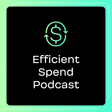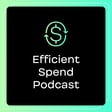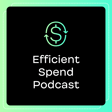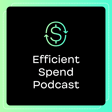
How to Align Product and Marketing at Your Startup | Andrei Vlasov
SUBSCRIBE TO LEARN FROM PAID MARKETING EXPERTS 🔔
The Efficient Spend Podcast helps start-ups turn media spend into revenue. Learn how the world's top marketers manage their media mix to drive growth!
In this episode of The Efficient Spend Podcast, Andrei Vlasov, growth leader and hybrid marketer, explores how blending paid marketing with product strategy creates sustainable growth. Andrei shares lessons from scaling acquisition across multiple channels, the importance of cross-functional collaboration, and aligning teams around ROI-driven metrics. He also dives into building effective YouTube influencer programs and why sharing insights across teams unlocks greater performance.
About the Host: Paul is a paid marketing leader with over a decade of experience optimizing marketing spend at venture-backed startups. He's driven $250M + in revenue through paid media and is passionate about helping startups deploy marketing dollars to drive growth.
About the Guest: Andrei Vlasov is a growth and marketing leader with over 15 years of experience across paid acquisition, product, and lifecycle. He’s led full-funnel growth at companies like Hover, Jam.dev, and Goodwall, driving millions of users and scaling cross-functional teams. Andrei now helps startups blend performance marketing with product strategy to unlock sustainable, ROI-driven growth.
VISIT OUR WEBSITE: https://www.efficientspend.com/
CONNECT WITH PAUL: https://www.linkedin.com/in/paulkovalski/
CONNECT WITH ANDREI: https://www.linkedin.com/in/andrei-vlasov08/
EPISODE LINKS:
https://hover.to/about/
https://jonahberger.com/books/contagious/
https://blog.hubspot.com/marketing/youtube-stats
https://influencermarketinghub.com/cpm-calculator/



